Over the years, countless household items have been phased out, either due to changing trends, technological advancements, or company shutdowns. However, nostalgia has a powerful pull, and many of these discontinued products are now highly sought after by collectors. Some items remind people of their childhood, while others have become rare and valuable due to limited production. Whether it’s a piece of vintage kitchenware or a once-popular cleaning product, these eleven discontinued household items have become collector’s treasures.
1. Pyrex Primary Color Mixing Bowls
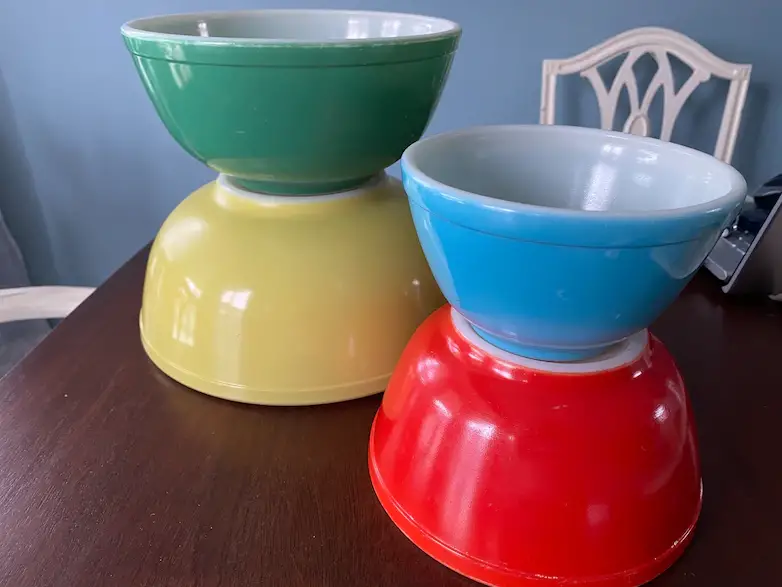
Pyrex’s iconic primary color mixing bowls were a staple in mid-century kitchens, known for their bright hues and durable glass. Produced between the 1940s and 1980s, these bowls came in a set of four, each in a different color: yellow, green, red, and blue. Over time, Pyrex updated its designs, replacing the vibrant solids with pastel or patterned styles, making the original sets highly desirable. Collectors now scour thrift stores and online marketplaces, willing to pay hundreds of dollars for a complete, well-preserved set.
The appeal of these bowls goes beyond nostalgia; their thick, tempered glass construction made them incredibly sturdy, unlike many modern kitchenware items. Many collectors seek them not just for display but for everyday use, preferring their quality over contemporary alternatives. However, finding a set in pristine condition is becoming increasingly difficult, as years of use often lead to chips, cracks, or fading colors. The most valuable sets still have their original shine and intact markings, making them a prized possession for vintage kitchenware enthusiasts.
2. Avon Collectible Perfume Bottles
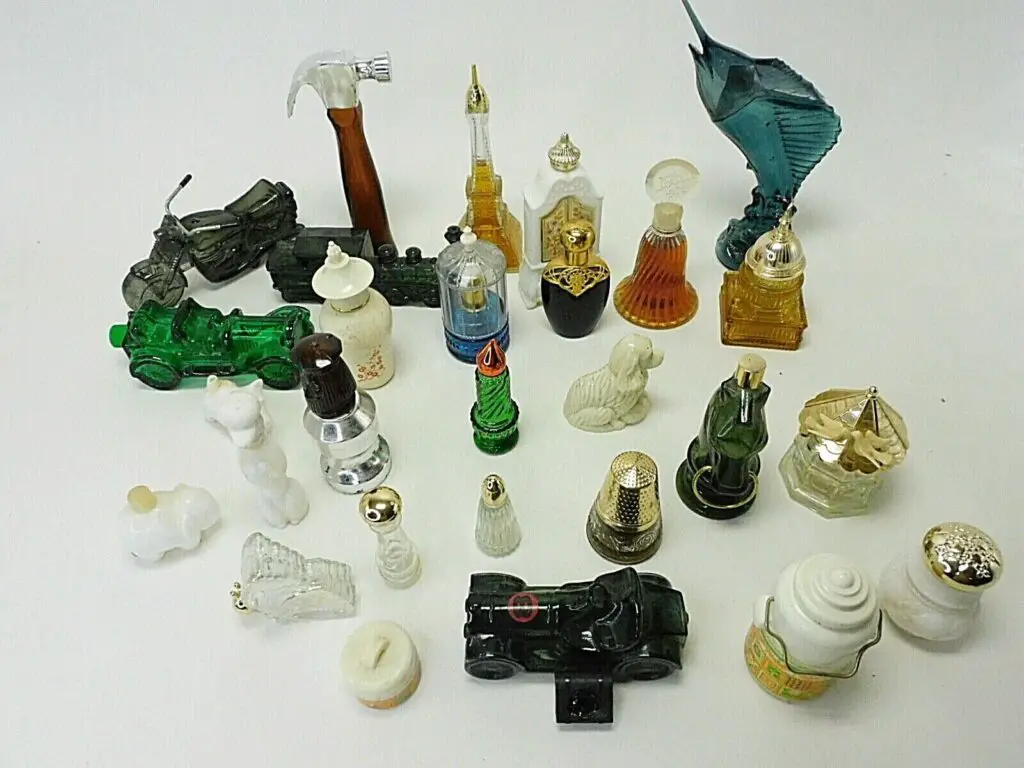
Avon’s unique perfume bottles were once a favorite among collectors, often shaped like cars, animals, or even everyday household objects. Throughout the mid-to-late 20th century, these decorative glass bottles were sold as part of Avon’s direct-to-consumer business, making them accessible to millions of households. Many people originally purchased them as gifts, leading to a wide variety of themed designs that have now become rare finds. As Avon shifted its business model, production of these iconic bottles declined, leaving collectors eager to hunt down the most coveted designs.
Some of the most valuable bottles today include vintage car designs, figural animals, and limited-edition holiday releases. While many of these bottles were mass-produced, certain rare versions in pristine condition can fetch high prices. Collectors especially prize those that still have their original boxes and intact perfume inside. Despite their sentimental value, Avon bottles remain relatively affordable compared to other collectibles, making them an appealing choice for both beginners and seasoned collectors.
3. Tupperware Servalier Canisters
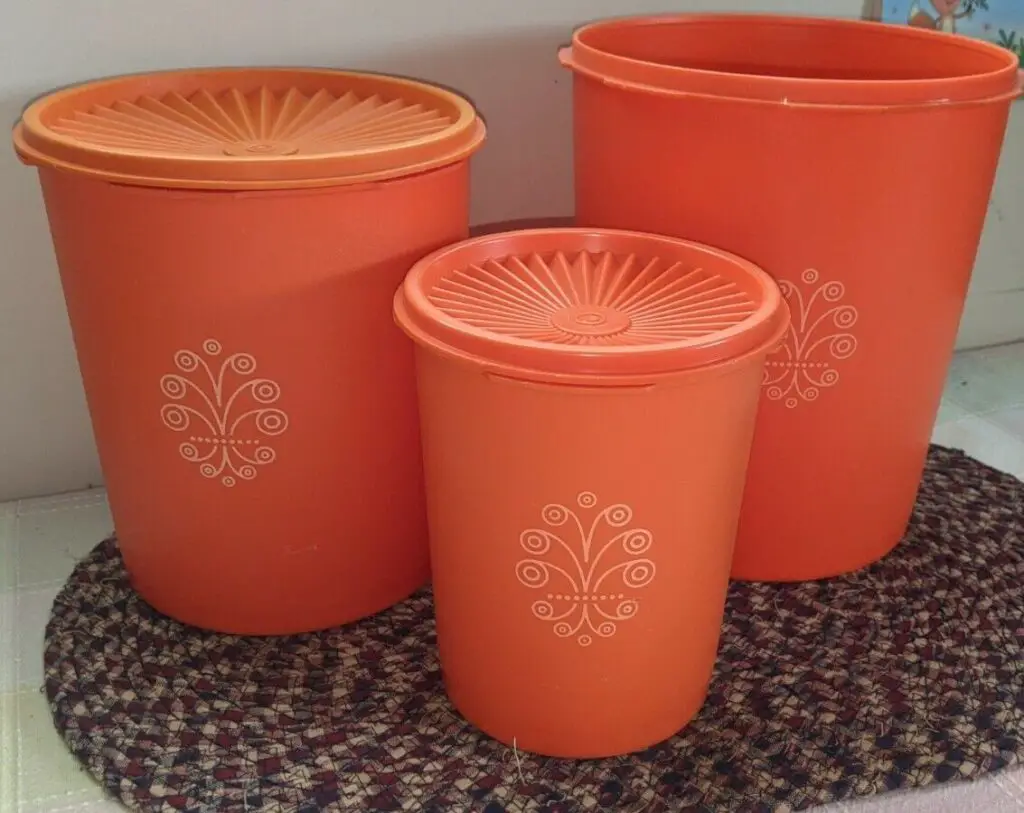
Tupperware’s Servalier canisters were a kitchen essential in the 1960s and 1970s, instantly recognizable by their bold colors and signature “burp” seal lids. These airtight containers kept food fresh and were a staple at Tupperware parties, where hosts demonstrated their practicality and durability. Over time, newer designs and materials replaced the Servalier line, leading to their eventual discontinuation. Today, collectors and vintage kitchen enthusiasts seek out these classic canisters for both their nostalgic charm and practical use.
Complete sets in original condition, particularly those in rare colors like avocado green or burnt orange, can command impressive prices. Many buyers enjoy using them for storage, appreciating their retro aesthetic and sturdy build. However, due to their plastic composition, some older canisters show signs of wear, such as discoloration or brittleness. Despite this, demand remains high, and well-preserved pieces continue to be highly desirable in vintage kitchenware circles.
4. CorningWare Blue Cornflower Dishes
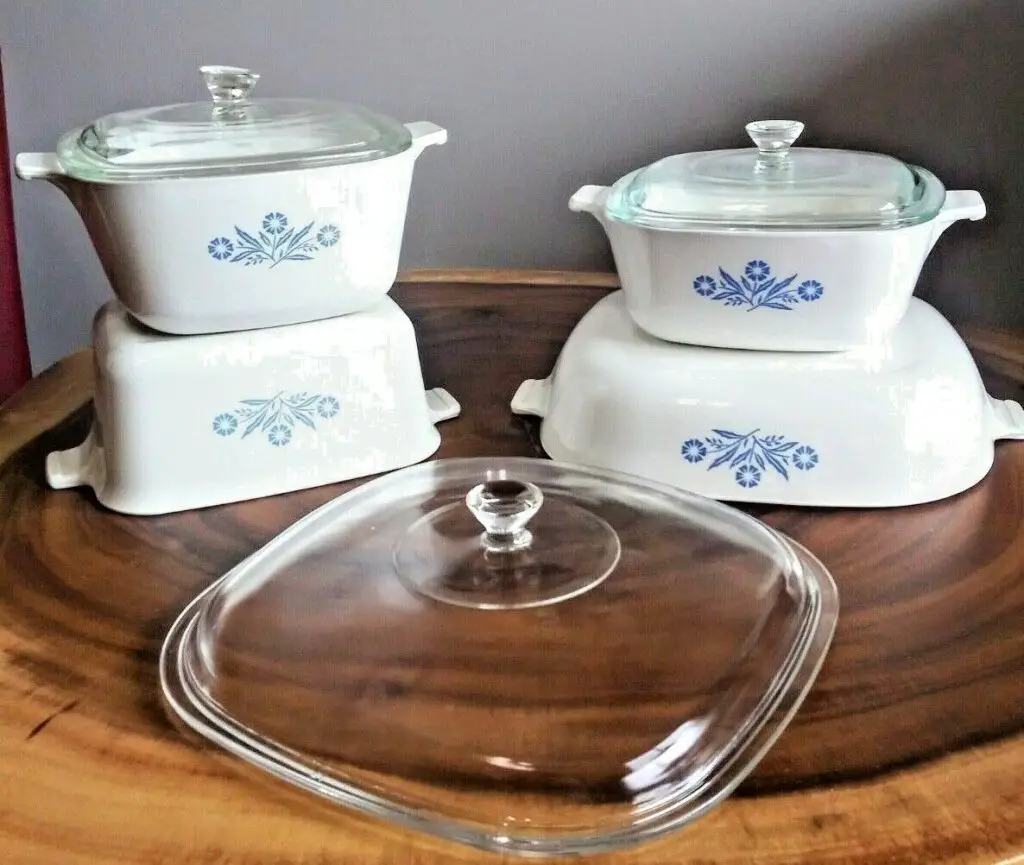
The Blue Cornflower pattern was one of CorningWare’s most beloved designs, adorning baking dishes, casserole dishes, and serving bowls from the 1950s through the 1980s. Known for its simple blue floral motif on a white ceramic base, this line was a household favorite due to its durability and versatility. However, as kitchen styles evolved, CorningWare shifted toward new patterns and materials, eventually phasing out the Blue Cornflower collection. Today, collectors eagerly seek out these vintage pieces, especially those with their original lids.
The appeal of Blue Cornflower goes beyond nostalgia—it was made from pyroceram, a highly durable glass-ceramic blend resistant to thermal shock. This meant dishes could go from freezer to oven without cracking, a feature modern cookware often lacks. Pristine sets, especially those with original boxes, can fetch high prices on resale markets. As more people look to revive vintage kitchen aesthetics, the demand for Blue Cornflower continues to rise.
5. General Electric Flip Clocks
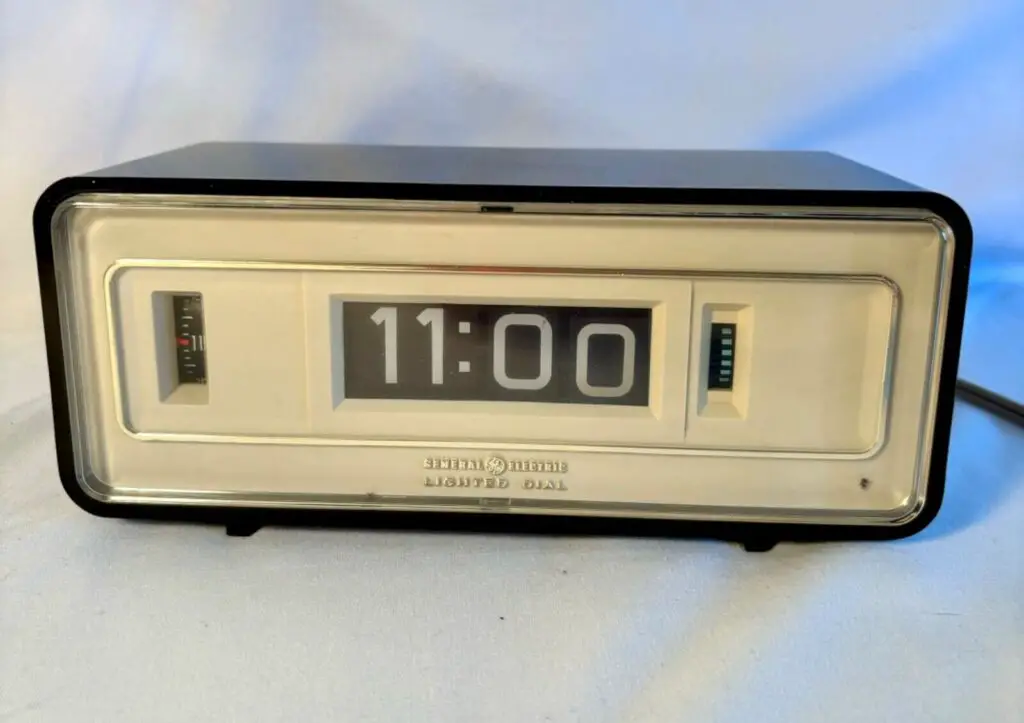
Before digital alarm clocks became the norm, General Electric’s flip clocks were a staple in bedrooms across America. These clocks featured a mechanical system that flipped individual number tiles to display the time, creating a distinct clicking sound with each minute change. While their design was innovative for the era, they were eventually replaced by more advanced digital models. Today, collectors and retro enthusiasts seek out these clocks for their nostalgic appeal and mechanical charm.
Rare models, especially those with unique color schemes or built-in radios, command high prices on auction sites. Many collectors enjoy the analog simplicity and mid-century aesthetic these clocks offer. However, finding one in working condition can be a challenge, as their delicate internal mechanisms are prone to wear and tear. Despite this, fully functional flip clocks remain highly desirable, particularly for those looking to add a vintage touch to their home decor.
6. Zenith Space Command Remote Controls
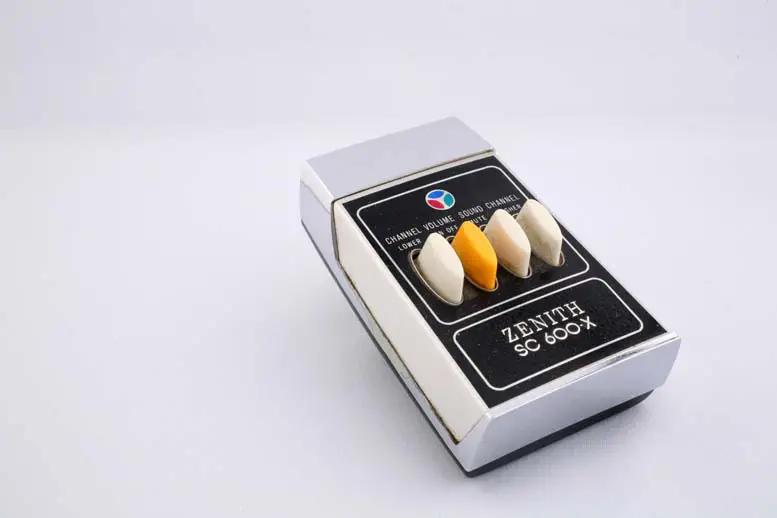
Zenith’s Space Command remote control revolutionized home entertainment when it was introduced in the 1950s, allowing users to change channels without getting up. Unlike modern remotes that rely on infrared technology, the Space Command used ultrasonic sound waves, making it one of the earliest examples of wireless control. As television technology advanced, infrared remotes took over, rendering these early ultrasonic models obsolete. Today, collectors and tech enthusiasts hunt for these vintage remotes as a piece of television history.
Fully functional Zenith remotes are rare finds, as many were discarded once newer models emerged. The Space Command’s simplistic, button-free design is a fascinating contrast to today’s complex remotes. Some collectors display them as decorative pieces, while others seek them for restoration projects. With the rise of interest in vintage electronics, the demand for these pioneering devices continues to grow.
7. IBM Selectric Typewriters
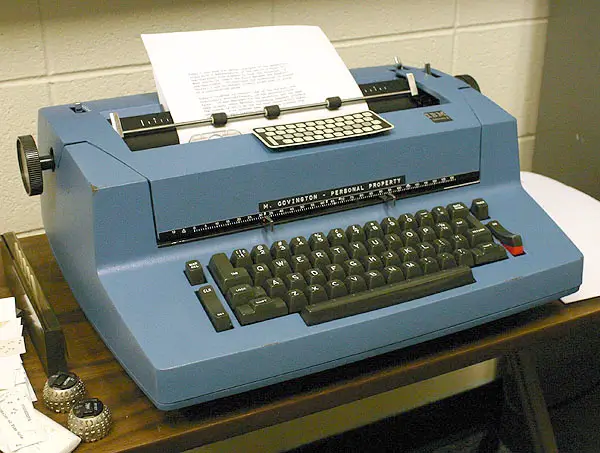
The IBM Selectric typewriter was a game-changer in offices and homes when it was introduced in the 1960s. Unlike traditional typewriters, it featured a revolutionary “golf ball” typing element that moved across the page, allowing for faster and smoother typing. Over the decades, computers and word processors made typewriters obsolete, leading to the eventual discontinuation of the Selectric line. However, collectors and vintage technology enthusiasts still seek out these iconic machines, often restoring them to working condition.
Well-preserved IBM Selectric typewriters, particularly rare models in bold colors like red or blue, can sell for hundreds of dollars. Many people admire their sturdy build and nostalgic charm, while some still prefer to use them for their tactile typing experience. However, due to their mechanical complexity, repairs can be challenging, and replacement parts are increasingly difficult to find. Despite these challenges, Selectric typewriters remain a prized possession for collectors of mid-century office equipment.
8. Erector Sets by A.C. Gilbert
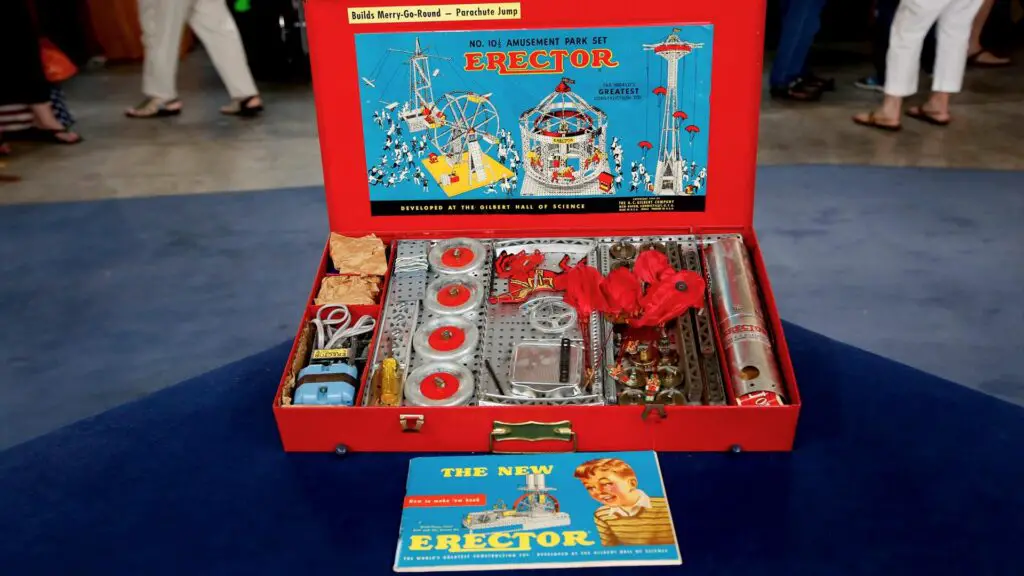
Erector Sets, first introduced by A.C. Gilbert in 1913, were a staple of childhood play for much of the 20th century. These metal construction kits allowed kids to build working models of bridges, buildings, and vehicles, fostering creativity and engineering skills. However, by the 1980s, plastic building sets like LEGO overtook Erector Sets in popularity, leading to their gradual disappearance from toy store shelves. Today, vintage sets, especially those with all their original parts and instructions, are highly sought after by collectors.
Certain rare editions, particularly those from the 1940s and 1950s, can fetch high prices at auctions. Collectors prize them for their sturdy metal components, intricate mechanical parts, and nostalgic value. However, finding a complete set in good condition is increasingly difficult, as many have lost small pieces over the decades. Despite this, the demand for classic Erector Sets continues, especially among those who appreciate their historical significance in STEM-related toys.
9. Vintage Glass Insulators
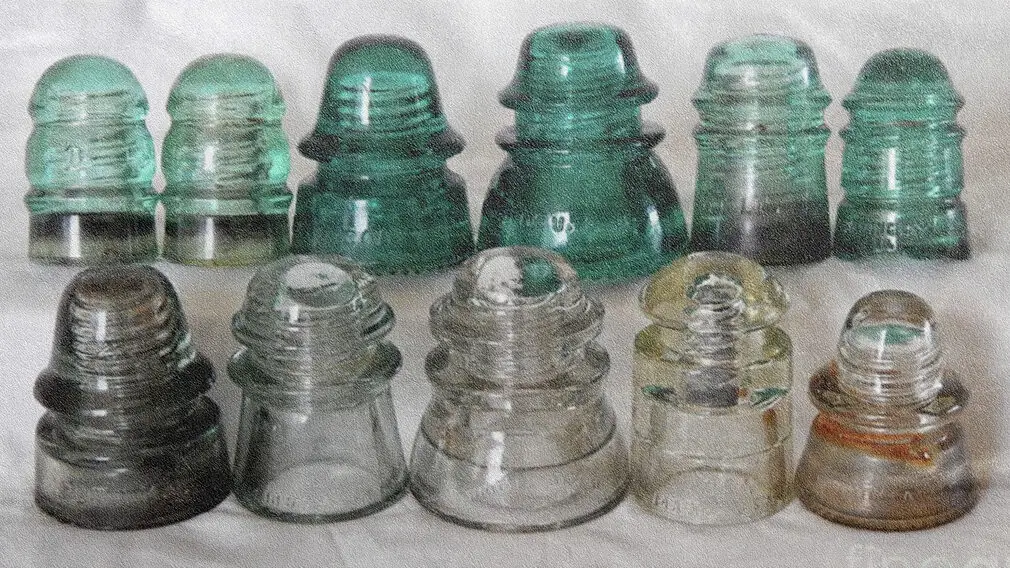
Before modern electrical wiring, glass insulators were commonly used on telephone and telegraph poles to protect electrical lines from grounding out. These thick, colorful glass pieces were produced in a variety of shapes and hues, including blue, green, purple, and amber. As technology evolved, glass insulators became obsolete, with plastic and ceramic replacements taking over by the late 20th century. Today, collectors and antique enthusiasts eagerly seek out these historic relics, often displaying them as decorative pieces.
The most valuable insulators come in rare colors and unique shapes, sometimes selling for hundreds or even thousands of dollars. Some collectors repurpose them into light fixtures or paperweights, giving them a second life beyond their original function. Due to their durability, many glass insulators remain intact despite being over a century old. Their combination of industrial history and aesthetic appeal makes them a fascinating collector’s item.
10. McDonald’s Collectible Glasses
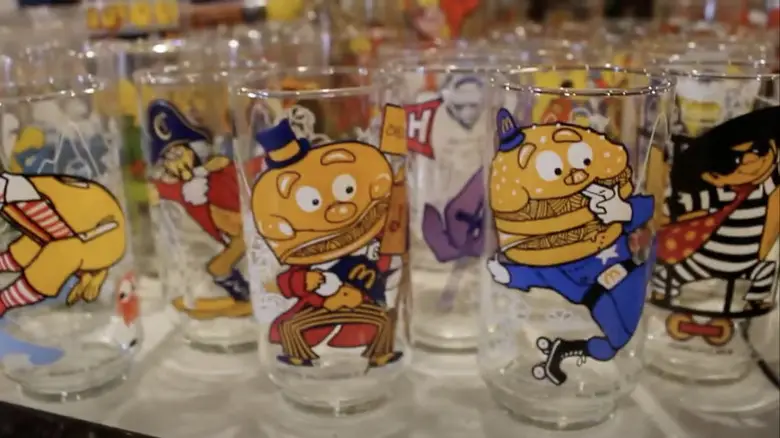
McDonald’s once regularly released promotional drinking glasses featuring beloved characters like Ronald McDonald, Grimace, and the Hamburglar. In the 1970s and 1980s, they expanded their glassware collections to include tie-ins with movies like Star Wars, Batman, and Disney. However, due to concerns over lead content in the paint used on some older designs, McDonald’s phased out glass giveaways in favor of plastic cups. Today, collectors eagerly search for vintage McDonald’s glasses, especially those from limited-edition releases.
Certain rare sets, such as the 1977 Star Wars glasses, can sell for hundreds of dollars if they are in mint condition. Many people collect them for nostalgia, remembering childhood trips to McDonald’s when these glasses were common household items. However, due to their fragility, finding sets without chips or faded designs can be a challenge. Despite this, vintage McDonald’s glassware remains a popular collector’s item among fast-food memorabilia enthusiasts.
11. Hoover Dial-A-Matic Vacuums
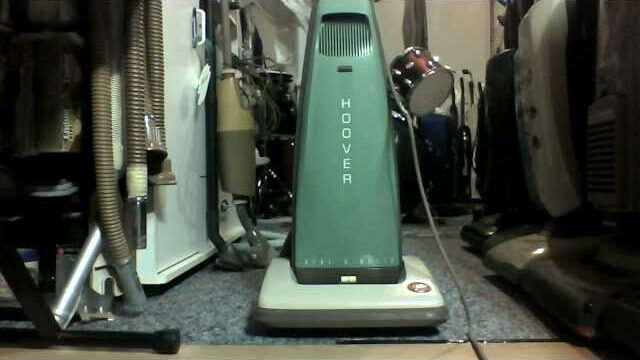
The Hoover Dial-A-Matic was one of the first vacuum cleaners to feature a self-propelled design, making it easier to push and maneuver. Introduced in the 1960s, it quickly became a household favorite due to its innovative features and sleek design. However, as newer vacuum technologies emerged, the Dial-A-Matic was eventually discontinued in favor of lighter, more compact models. Today, vintage appliance collectors actively seek these vacuums, especially fully functional ones with their original attachments.
Restored Dial-A-Matic vacuums can fetch high prices, as many collectors appreciate their durability and mid-century aesthetic. Some enthusiasts even use them as daily vacuums, claiming they outperform modern plastic models in suction power and longevity. However, due to their age, finding replacement parts can be difficult, making restoration a challenge. Despite this, the Hoover Dial-A-Matic remains a prized item among vintage appliance collectors who appreciate its role in vacuum history.
